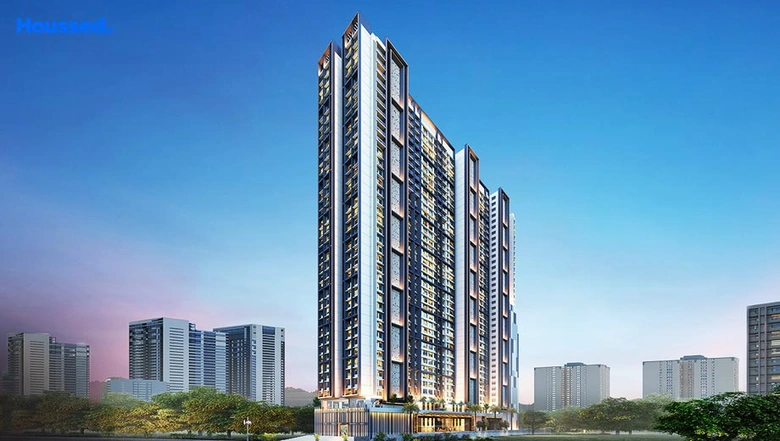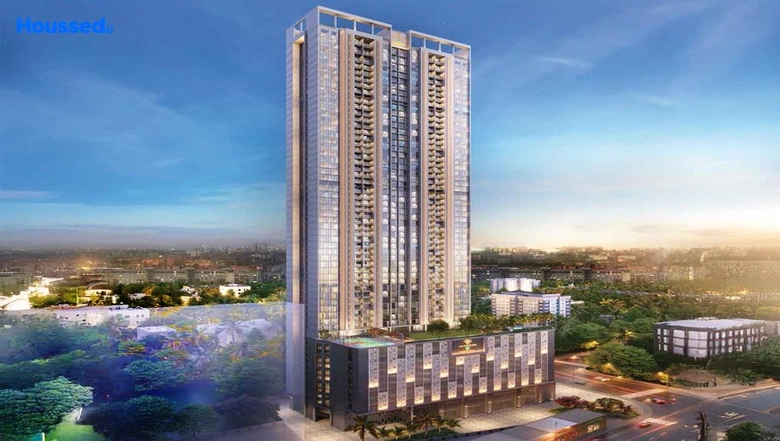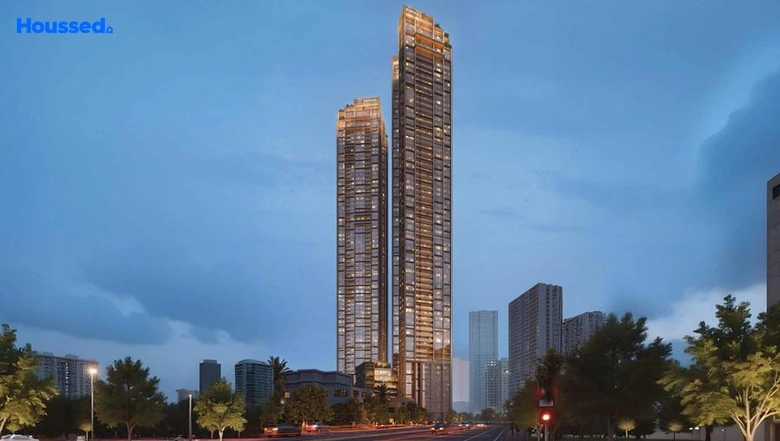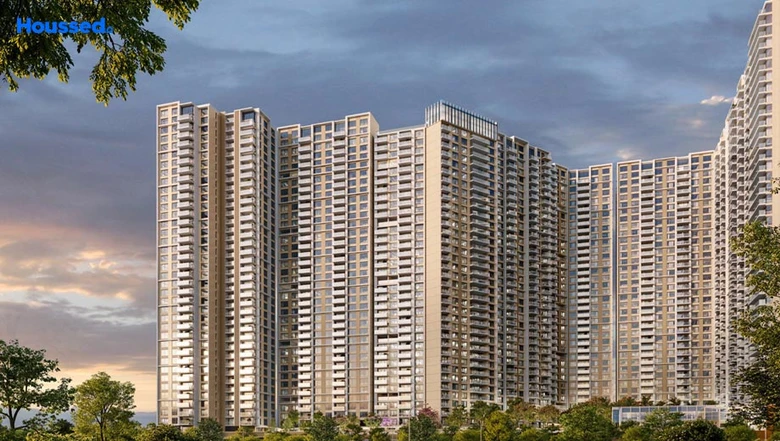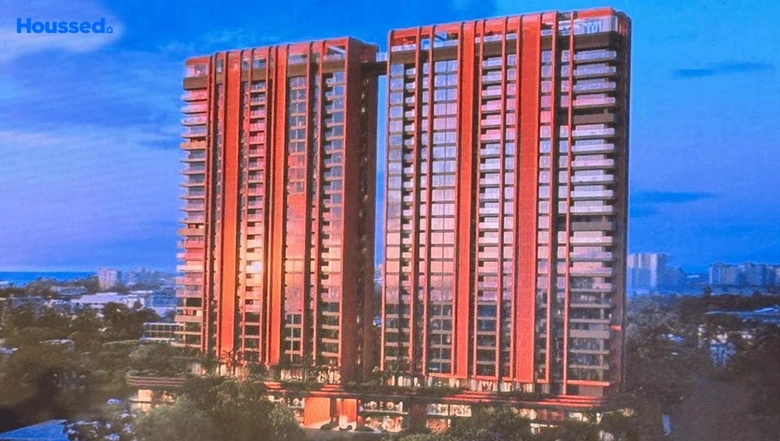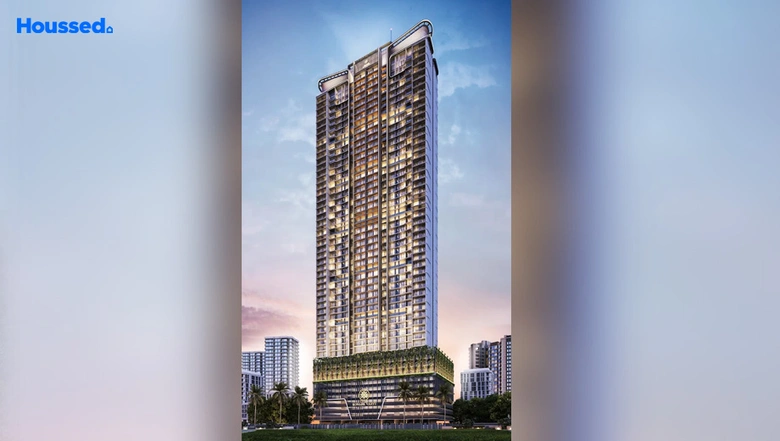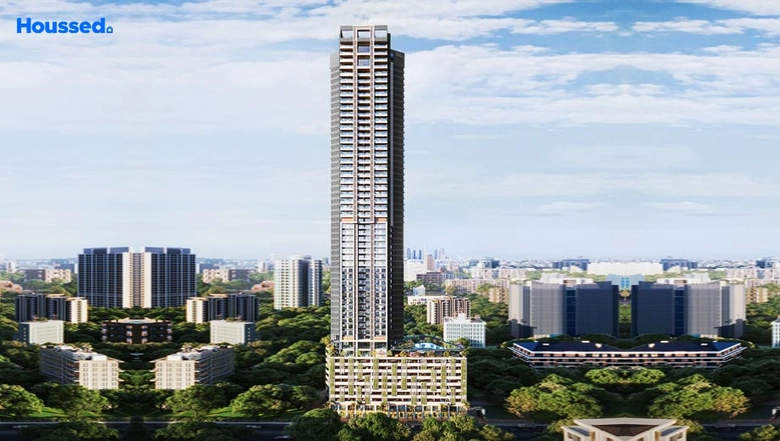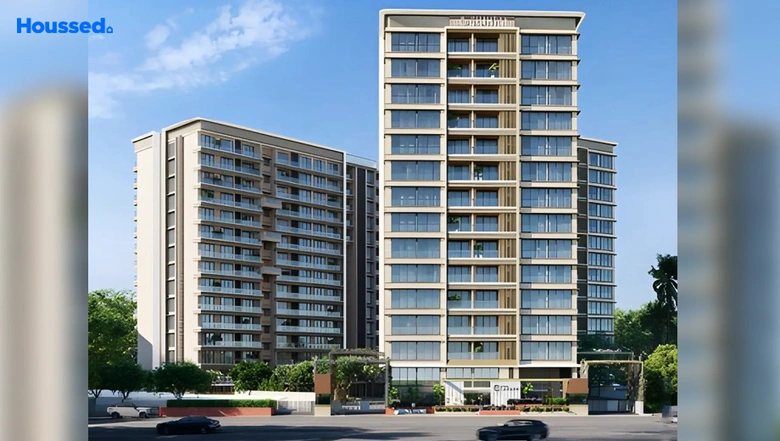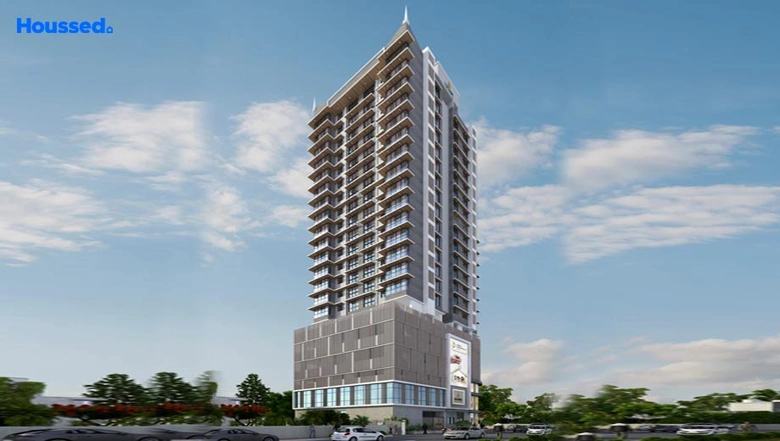Modern POP Plus Minus Design in 2025
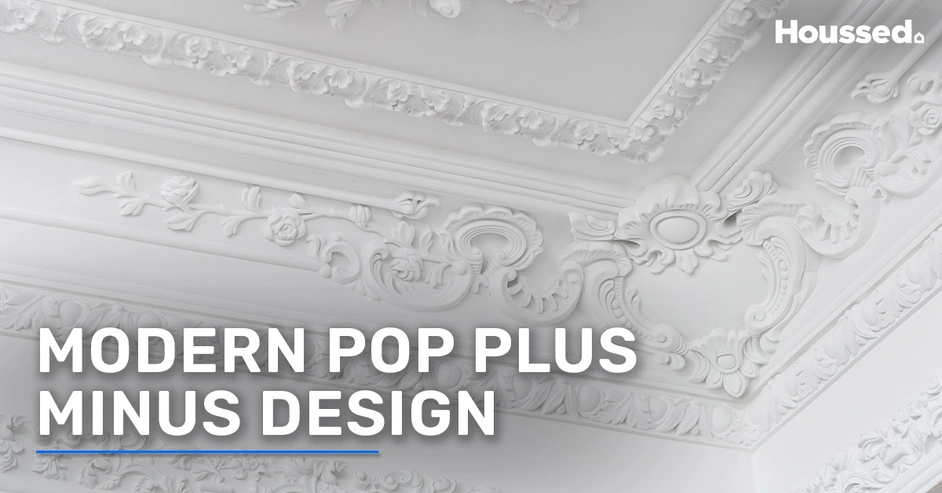
Looking to add a unique touch to your ceiling and walls? In contemporary interior design, these surfaces have become key focal points, especially with the growing popularity of innovative Plaster of Paris (POP) plus-minus patterns.
Due to its versatility, POP can be moulded into everything from clean geometric lines to intricate floral motifs, catering to various aesthetic preferences.
In this guide, we'll delve into the concept of modern plus-minus POP designs, their benefits, and their key insights to help you make an informed decision about incorporating them into your space.
What is a Modern POP Plus Minus Design?
POP Plus-Minus design is a modern interior design technique that uses Plaster of Paris (POP) to create intricate patterns, shapes, and textures on ceilings and walls, resulting in a visually dynamic and three-dimensional effect through the interplay of positive and negative spaces.
It is known for its ease of use in creating decorative elements. The POP Plus-Minus design elevates this traditional plastercraft by incorporating positive and negative spaces. Positive spaces refer to raised patterns and shapes, while negative spaces enhance the contrast and visual appeal.
Also Read - Modern Jali Door Design
What Is a POP Ceiling?
A POP ceiling is a false ceiling created using Plaster of Paris, a quick-setting material that’s ideal for molding into custom designs. Due to its lightweight and malleable nature, it allows for intricate patterns, curves, and layered effects that suit both traditional and contemporary interiors.
Understanding POP Ceiling Concepts
Plaster of Paris (POP) is a popular material in interior design, especially for crafting decorative ceiling patterns. Its flexible nature allows designers to create intricate, customised designs that elevate the overall aesthetic of a space.
POP ceilings are visually appealing and offer practical benefits such as durability, fire resistance, and the ability to conceal wiring and structural imperfections. Its versatility in forming various shapes and patterns makes POP an ideal choice for different interior styles and themes.
The "Plus Minus" Concept Explained
The "Plus Minus" design technique involves creating raised (plus) and recessed (minus) patterns on ceilings or walls using POP. This approach adds depth and character to flat surfaces, creating dynamic and visually appealing designs.
Designers can achieve a wide range of styles, from classic to contemporary, by combining different forms and patterns, making it an ideal choice for various interior themes. The play of light and shadow across the raised and recessed elements further amplifies the visual impact, bringing the design to life.
Why the POP Plus Minus Style is Trending in 2025
- Visual Contrast: The play of light and shadow enhances the ambience.
- Custom Appeal: From modern minimalism to ornate traditional styles, it adapts to any interior.
- Lighting Integration: Recessed LEDs or cove lighting can be embedded into the minus zones for a stunning backlit effect.
- Enhanced Room Identity: Makes the ceiling an artistic centerpiece instead of an afterthought.
New Modern POP Plus Minus Design
Modern POP (Plaster of Paris) plus-minus designs significantly enhance the aesthetic appeal of interiors. Here are some popular design elements commonly used in these styles:
1: Geometric Patterns
Geometric patterns, such as hexagons, triangles, and grids, are gaining popularity for their modern appeal. These designs create a sense of order and symmetry, making spaces appear more organised and stylish. They are especially useful as focus points in living areas and bedrooms.
2: Circular & Oval Designs
Circular and oval POP designs bring softness and fluidity to interiors. These shapes can make rooms feel more spacious and are often used to highlight central fixtures like chandeliers.
Furthermore, their symmetrical and continuous flow adds a sense of balance and visual harmony, making rooms appear more expansive and thoughtfully designed.
Also Read - House Colour Combination
3: Modern Abstract POP Design
Abstract POP designs break away from traditional ceiling styles, offering bold and artistic expressions. These plus-minus designs often incorporate unconventional shapes, asymmetrical patterns, and creative layouts, adding a personalised and imaginative touch to any space.
When paired with textured paints or unique lighting, abstract POP ceilings become striking focal points, making these designs perfect for homeowners who want to make a strong visual statement.
4: Floral and Nature-Inspired Design
Nature-inspired POP designs, featuring floral motifs and organic shapes, bring the beauty of the outdoors indoors. These designs are perfect for spaces like bedrooms, living rooms, and relaxing areas with a desired soothing atmosphere. The intricate detailing of floral patterns, from delicate petals to winding vines, adds a layer of elegance and sophistication to the interiors.
Furthermore, these designs can evoke a sense of calm and harmony, making them ideal for spaces dedicated to rest and rejuvenation. Nature-inspired POP designs can seamlessly blend with various decor styles, whether paired with soft, earthy tones or vibrant hues.
5: Layered Ceiling with Cove Lighting
Layered POP ceilings combined with cove lighting elevate the depth and ambience of a living room or dining area. The subtle interplay of shadow and light created by the cove lighting emphasises the layered patterns, producing a dramatic effect that adds a sense of luxury to the spaces.
This combination enhances the visual appeal and sets the perfect mood, making the space feel warm and inviting.
6: Designer POP Walls with Plus Minus Texture
The plus-minus technique to walls introduces depth and character, turning plain surfaces into eye-catching design elements. POP-textured walls work beautifully as feature walls, offering visual contrast and elevating the overall aesthetics of a space.
Their high level of customisation ensures they seamlessly align with the room’s decor theme, contributing to a harmonious and thoughtfully designed interior.
Also Read - Home Decor Ideas
Modern POP Plus Minus Design Ideas for House
1: Living Room
A modern POP plus-minus design in the living room can create a lasting first impression. Layered tray ceilings with integrated cove lighting add depth and warmth, setting a refined tone for the space.
Geometric patterns or abstract motifs can be striking focal points, enhancing the room’s overall aesthetic. Pairing these ceiling designs with lighting, such as chandeliers or pendant lights, further elevates the ambience.
Consider intricate cornice patterns, recessed edges, and subtle floral borders combined with concealed lighting to introduce sophistication and visual interest for a more elegant touch.
2: Dining Area
The dining room is vital for family gatherings and shared meals, where ambience and lighting significantly impact the overall experience. A popular POP plus-minus design for this area is a two-layered ceiling structure with recessed lighting, creating a soft, elegant light gradient.
Add pendant lights or multi-coloured lamp shades to highlight the dining table as the centrepiece to create both function and style.
Consider decorating the walls with designer plates arranged over a plus-minus POP backdrop featuring striped or geometric patterns for added charm.
3: Bedroom
For bedrooms, plus-minus POP designs can contribute to a serene and restful environment. Pastel shades like light blue, baby pink, light yellow, and sea green for the bedroom provide an aesthetic vibe while promoting relaxation.
To maintain visual harmony, consider matching these tones with linens and curtains in slightly darker shades of the same colour.
When selecting a bedroom POP plus minus design, incorporating curved lines instead of sharp, straight ones can soften the look of the space. Interior designers often favour these designs to create visually captivating elements that contribute to a tranquil bedroom setting.
4: Kitchen
The kitchen is often overlooked in house design, with people focusing more on halls and bedrooms. However, modern apartments and houses have spectacular kitchen designs. Avoiding intricate plus-minus POP designs is essential, as Indian kitchens often use oil, causing oil droplets to accumulate on walls and ceilings and making cleaning difficult.
Instead, opt for simple stripes or geometric patterns with minimal POP designs. Add a false POP ceiling for modern homes and hide extra wiring and pipes. Pair these designs with bright lighting, preferably yellow or white, to complete the look of your kitchen.
5: Hallways and Porches
Hallways and porches serve as important transitional spaces within a home. Incorporating plus-minus POP designs in these areas can enhance visual continuity and improve the overall flow between rooms.
In hallways, linear patterns or subtle textured elements can add depth and direction, guiding movement while maintaining elegance. For porches, it’s essential to use weather-resistant POP materials to ensure long-term durability.
Architectural features such as decorative arches and pillars, combined with plus-minus detailing, can significantly elevate the aesthetic appeal. These elements add charm and create a welcoming first impression for guests.
Also Read - Vastu Colours for Bedroom
6: Bathroom
Bathrooms can greatly benefit from plus-minus POP designs that introduce a sense of luxury and sophistication. Since moisture and humidity are constant factors, it's essential to use moisture-resistant POP materials to ensure durability and longevity.
Recessed lighting integrated within the modern pop plus minus ceiling design can create a soft and spa-like ambience. Minimalistic patterns or gentle curves in the design can enhance the feeling of calm and cleanliness.
Furthermore, incorporating mirror accents or backlit niches within the POP structure can elevate the bathroom's elegance while adding functional lighting elements.
7: Kids' Room
In children's rooms, playful plus minus POP designs can stimulate creativity. Consider incorporating fun shapes, such as clouds or stars, and using vibrant colours. Ensure the designs are safe and age-appropriate, with smooth edges and non-toxic materials.
You can consider designing it as a football field for a sports enthusiast, a Gryffindor house for a Harry Potter enthusiast, or a fairyland for a Disney princess.
8: Pooja Room
The pooja room is a sacred space, and the modern plus minus POP designs should reflect serenity and spirituality. Transform your home pooja room into a serene sanctuary by drawing inspiration from the intricate ceilings of Indian temples.
Utilise modern POP plus-minus designs to incorporate elements like floral motifs, deity depictions, or epic narratives like the Mahabharata, adding depth and spiritual ambience.
To further enhance the sacred atmosphere, consider incorporating hanging elements like brass bells or elegant chandeliers, blending traditional symbolism with contemporary elegance for a truly divine setting.
9: Balcony
Balconies can be transformed into inviting, cosy retreats with the thoughtful use of the latest POP ceiling design 2025. Incorporating natural motifs, such as leaves, vines, and floral patterns, helps create harmony with the outdoor surroundings and enhances the connection with nature. Linear grooves or wave-like textures in the ceiling or walls can add subtle elegance without overwhelming the space.
Since balconies are exposed to varying weather conditions, it's essential to use moisture and weather-resistant POP materials to ensure durability. Complement the look with ambient lighting, hanging planters, and wooden accents to create a peaceful environment.
A Quick Glance – Modern POP Plus Minus Design Ideas for Every Room – 2025 Guide
|
Room |
Design Highlights |
Lighting Ideas |
Additional Tips |
|
Living Room |
Layered tray ceilings, geometric or abstract motifs, cornice borders |
Cove lighting, chandeliers, pendant lights |
Use recessed edges with floral accents for elegance |
|
Dining Area |
Two-layered ceiling with soft gradient lighting, geometric wall patterns |
Pendant lights, coloured lamp shades |
Highlight the dining table as a focal point |
|
Bedroom |
Curved lines, pastel colour palette (blue, pink, yellow, sea green) |
Soft ambient lighting |
Match ceiling tones with linens and curtains for harmony |
|
Kitchen |
Minimal POP designs with stripes or geometric patterns |
Bright yellow or white lighting |
Avoid intricate designs due to oil buildup; use POP to conceal wires/pipes |
|
Hallways/Porches |
Linear patterns, textured elements, decorative arches and pillars |
Subtle or spot lighting |
Use weather-resistant POP for outdoor durability |
|
Bathroom |
Simple patterns with recessed lighting, moisture-resistant materials |
Backlit niches, soft white lighting |
Add mirror accents for a spa-like ambiance |
|
Kids' Room |
Fun shapes (clouds, stars), themed designs (football, fairyland, Gryffindor) |
Colourful, playful lighting |
Use non-toxic, smooth-edged materials for safety |
|
Pooja Room |
Intricate temple-inspired motifs, deity depictions, and spiritual narratives |
Brass chandeliers, soft warm lights |
Blend traditional symbolism with modern elements like bells and floral borders |
|
Balcony |
Natural patterns (leaves, vines), wave textures, wooden accents |
Ambient lights, hanging planters |
Use weatherproof POP and connect design with nature |
Also Read - Vastu Tips for Home
Tips to Choose the Right Modern POP Plus Minus Design
1. Room Size:
The dimensions of your room play an important role in determining the appropriate POP design.
- Small Rooms: When it comes to choosing the best POP designs for small spaces, opt for minimalist designs with subtle textures to avoid overwhelming the space. Light colours and simple patterns can make the room appear more spacious.
- Large Rooms: You can experiment with intricate designs, layered patterns, and bold colours, adding depth and character to the space.
2. Lighting:
Lighting enhances the aesthetics of modern POP plus minus design and influences the room's ambience.
- Natural Light: Maximise using natural light to highlight the textures and patterns of the POP design.
- Artificial Lighting: Incorporate layered ambient and accent lighting to create a dynamic and inviting atmosphere. Recessed lights, cove lighting, and pendant fixtures can accentuate the POP features.
3. Colour Combinations:
The colour palette sets the mood and complements the overall design theme.
- Neutral Tones: Shades like white, beige, and grey offer a timeless appeal and can make spaces feel larger and more open.
- Bold Colours: Incorporate vibrant hues like teal, mustard, or burgundy to add personality and vibrancy.
- Metallic Accents: Gold, silver, and bronze accents can add a luxurious feel to the design.
4. Ceiling Height:
The height of your ceiling influences the choice of POP design.
- Low Ceilings: Opt for flat or single-layer designs to maintain a sense of openness.
- High Ceilings: You can explore multi-layered designs, incorporating recesses and projections to add depth and interest.
Conclusion
Modern POP Plus Minus Designs offer a versatile, aesthetic approach to enhancing interior spaces. By incorporating raised and recessed patterns, these designs add depth and character to ceilings and walls. Their adaptability allows customisation to suit various room sizes, functions, and personal preferences.
Whether aiming for a minimalist look or a more elaborate design, POP Plus Minus design provides a durable and cost-effective solution to elevate the ambience of any home.
FAQ's
A modern POP Plus Minus design involves creating raised (plus) and recessed (minus) patterns on ceilings or walls using Plaster of Paris. This method adds depth and texture, enhancing the visual appeal of interior spaces.
Regular POP designs typically involve flat or uniformly textured surfaces, while plus-minus designs incorporate varying depths, creating a more dynamic and three-dimensional effect.
POP plus-minus designs primarily use Plaster of Paris as the core material. However, they can also integrate gypsum boards, metal frames, wooden elements, and lighting fixtures to enhance aesthetic appeal and functionality.
Yes, modern POP plus minus design is generally cost-effective, with the overall cost varying based on design complexity, materials used, and labour charges.
Absolutely! These designs are highly customisable, allowing homeowners to tailor patterns, shapes, and lighting to match their specific preferences and room requirements.
Yes, there are eco-friendly alternatives available. Using sustainable materials like gypsum boards and incorporating energy-efficient LED lighting can significantly reduce the environmental impact of POP designs, making them a more sustainable choice for modern interiors.
Yes, combining POP with materials like wood or metal can enhance the design's aesthetic appeal and structural integrity, offering a unique and personalised look.
